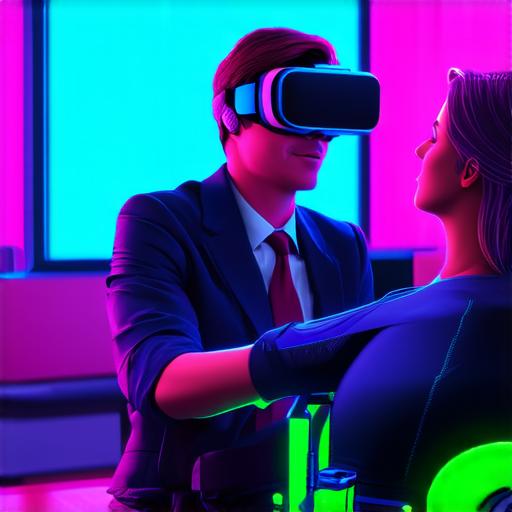
Virtual reality (VR) technology has revolutionized the way we interact with digital environments, and it has also found a significant role in treating mental health conditions. Virtual reality exposure therapy is one of the most promising applications of VR technology in healthcare, and it has already shown great promise in helping people overcome phobias, anxiety disorders, and other mental health issues.
The Origins of Virtual Reality Exposure Therapy
Virtual reality technology can be traced back to the 1960s when Ivan Sutherland created the first virtual reality system called “Swordfishtrombones.” However, it wasn’t until the 1990s that VR started to be used for therapeutic purposes. In 1997, a team of researchers at the University of California, Los Angeles (UCLA) developed a VR program called “Exposure Therapy in Virtual Environments” (ETVE) to treat fear of heights. The ETVE program involved exposing patients to virtual environments that simulated different heights and angles, allowing them to gradually become more comfortable with the sensation of being high up. Since then, VR exposure therapy has been used to treat a wide range of mental health conditions, including phobias such as arachnophobia, acrophobia, and claustrophobia, as well as anxiety disorders like panic disorder and social anxiety disorder.
The Science Behind Virtual Reality Exposure Therapy
Virtual reality exposure therapy works by exposing patients to a virtual environment that simulates the trigger for their condition. This exposure is gradual and controlled, allowing patients to become more comfortable with the sensation over time. The aim of VR exposure therapy is to desensitize patients to the trigger, reducing their anxiety and improving their overall mental health.
Real-Life Examples of Virtual Reality Exposure Therapy
Virtual reality exposure therapy has already had a significant impact on the lives of many people. Here are just a few examples:
-
A study published in the Journal of Consulting and Clinical Psychology found that VR exposure therapy was as effective as traditional exposure therapy in treating fear of heights. Patients who underwent VR exposure therapy showed significant reductions in their fear of heights after just a few sessions.
-
Another study published in the Journal of Anxiety Disorders found that VR exposure therapy was effective in reducing symptoms of social anxiety disorder. Patients who underwent VR exposure therapy showed significant improvements in their social anxiety levels after just a few sessions.
-
A case study published in the Journal of Trauma and Dissociation found that VR exposure therapy was effective in treating panic disorder with agoraphobia. The patient, who had previously been unable to leave her home due to her condition, was able to undergo VR exposure therapy and gradually become more comfortable with leaving her home.
FAQs
1. What conditions can virtual reality exposure therapy be used to treat?
Virtual reality exposure therapy can be used to treat a wide range of mental health conditions, including phobias, anxiety disorders, and post-traumatic stress disorder (PTSD). It has also been used to treat other conditions such as chronic pain, addiction, and PTSD in children.
2. How effective is virtual reality exposure therapy compared to traditional exposure therapy?
Research has shown that virtual reality exposure therapy can be just as effective as traditional exposure therapy in treating certain conditions. In fact, some studies have found that VR exposure therapy may be even more effective, as it allows for a more controlled and customized exposure experience.
